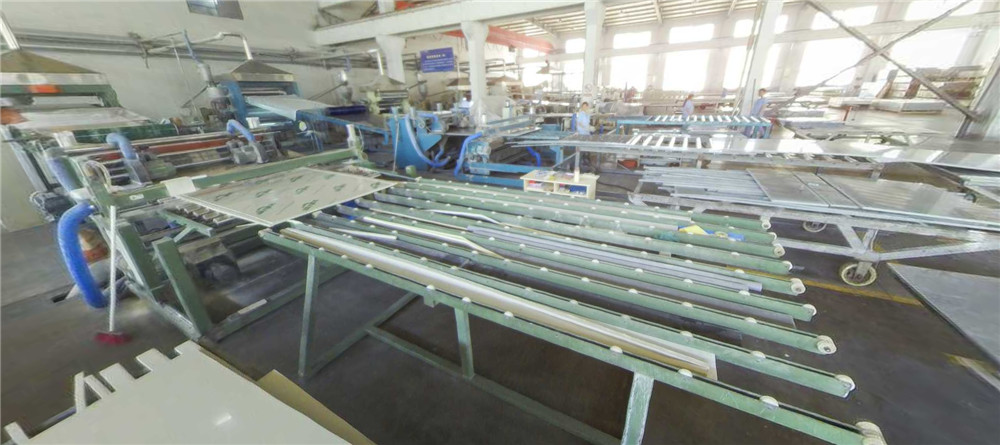Dec . 04, 2024 06:35 Back to list
High-Quality PVC Board Sheets for Versatile Applications and Creative Projects
Understanding PVC Board Sheets A Comprehensive Guide
PVC (polyvinyl chloride) board sheets have become a popular material in various industries due to their versatility, durability, and cost-effectiveness. They are manufactured using PVC resin, which is a synthetic plastic polymer known for its lightweight yet robust properties. This article delves into the characteristics, applications, advantages, and limitations of PVC board sheets, providing a comprehensive understanding of their essential role in modern manufacturing and construction.
Characteristics of PVC Board Sheets
One of the most distinguishing features of PVC board sheets is their versatility in thickness and size, which allows for a broad range of applications. Typically, these sheets are available in thicknesses from 1mm to 25mm, and their sizes can be customized according to specific needs. They are non-toxic, making them safe for various uses, including signage and interior decoration.
PVC board sheets have a smooth surface that can be easily printed on, painted, or laminated, which makes them ideal for advertising and creative projects. Additionally, they are resistant to moisture, chemicals, and UV light, which further adds to their appeal for outdoor use. Their maintenance is minimal; a simple wash with soap and water is often sufficient to keep them looking fresh.
Applications of PVC Board Sheets
The applications of PVC board sheets are extensive, spanning multiple industries. In construction, they are primarily used for wall cladding, ceilings, and partitions due to their lightweight nature and ease of installation. Additionally, their resistance to water makes them an excellent choice for bathrooms, kitchens, and other areas prone to moisture.
In the advertising and signage sector, PVC sheets are favored for making outdoor and indoor signs, display boards, and point-of-purchase displays. They provide vibrant prints and can be easily cut into various shapes and sizes.
Moreover, PVC sheets are widely used in the furniture industry, where they can be fabricated into cabinets, tables, and modular units. In the fashion industry, they serve as an innovative material for accessories and decorative items. The pharmaceutical and food industries also utilize PVC board sheets for creating hygienic surfaces and packaging materials.
pvc board sheet

Advantages of PVC Board Sheets
The advantages of PVC board sheets are numerous, making them a preferred choice for many applications. Firstly, they are incredibly lightweight compared to materials such as wood or metal, which reduces shipping costs and eases handling during installation. Secondly, their durability ensures a long lifespan, even in adverse conditions, which translates to lower replacement costs.
Another significant advantage is their cost-effectiveness. PVC sheets are often more affordable than other materials, without compromising on quality. This affordability makes them an attractive option for bulk purchasing in commercial settings.
Lastly, their environmental impact is also comparatively lower than that of traditional building materials. Many PVC sheets are manufactured using recycled materials, and they can be recycled after their useful life, making them a more sustainable choice.
Limitations of PVC Board Sheets
Despite their many advantages, PVC board sheets do have some limitations. For instance, they can be prone to scratching and denting if not handled carefully. Additionally, while they are fire-resistant to some degree, PVC can melt when exposed to high heat, which may present risks in certain applications.
Furthermore, the aesthetic appeal may not match that of natural wood or stone, which can be a disadvantage for projects aiming for a more organic look. Therefore, while they offer a practical solution, their design limitations must be considered.
Conclusion
In conclusion, PVC board sheets are a vital material in contemporary manufacturing and construction, offering a fusion of practicality, affordability, and versatility. Their unique properties make them suitable for a wide range of applications, from construction to signage and furniture. Despite some limitations, their benefits often outweigh the drawbacks, making them a popular choice for both businesses and consumers alike. As technology advances and materials evolve, the future looks bright for PVC board sheets, promising even more innovative uses in diverse fields.
-
High-Quality PPR Pipes and Fittings Durable ERA PPR & PVC PPR Solutions
NewsJul.08,2025
-
Black HDPE Cutting Board - Durable, Non-Porous & Food Safe HDPE Plastic Cutting Board
NewsJul.08,2025
-
High-Quality CPVC Panel Durable HDPE & PVC Panels Supplier
NewsJul.08,2025
-
Double PE Welding Rod Supplier - High Strength, Durable & Versatile Welding Solutions
NewsJul.07,2025
-
High-Quality PVC-O Pipe Supplier Durable 75mm PVC Pipe & Connections Leading PVC Pipe Company
NewsJul.07,2025
-
HDPE Drainage Pipe Supplier – Durable & Corrosion-Resistant Solutions
NewsJul.06,2025

